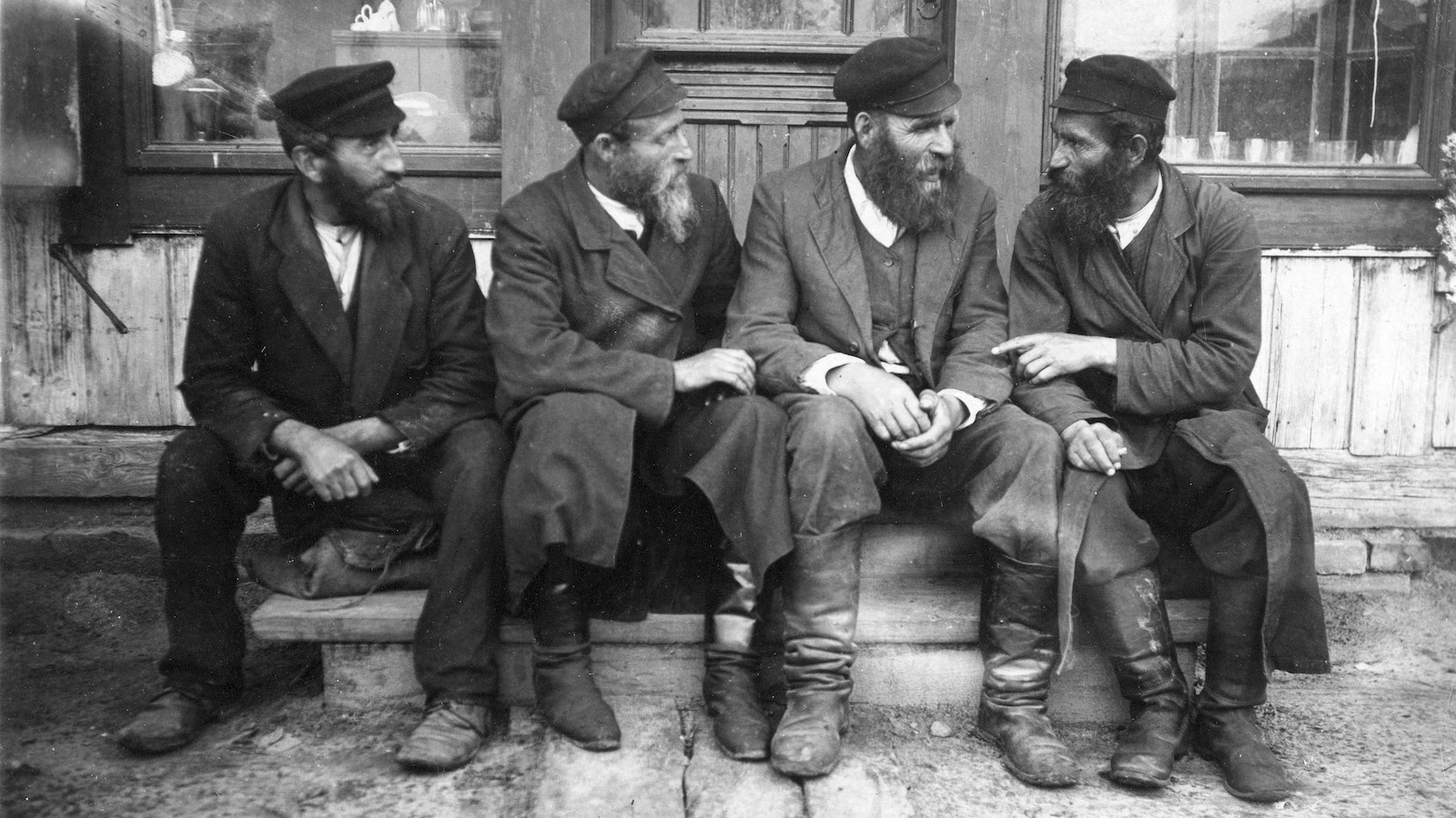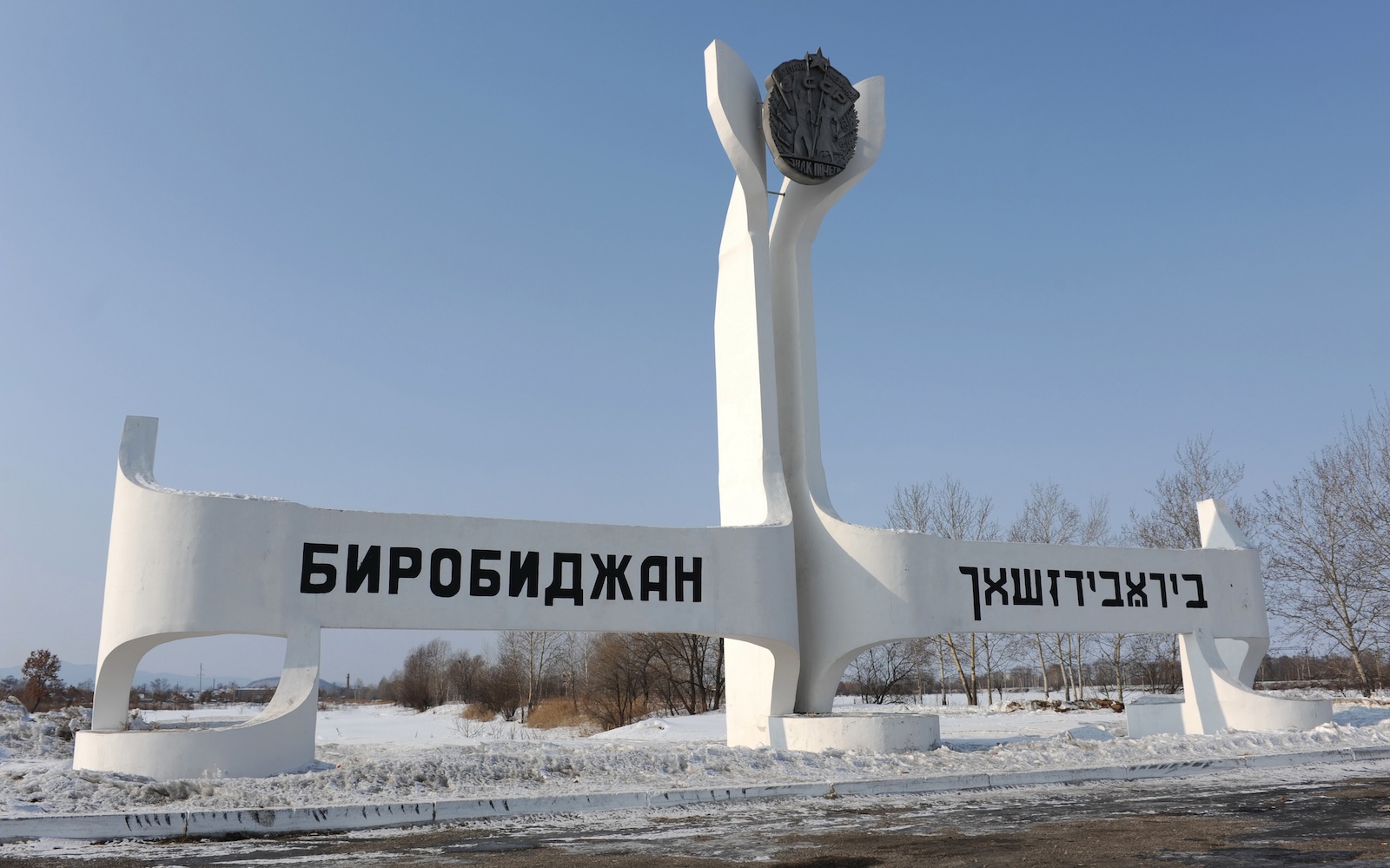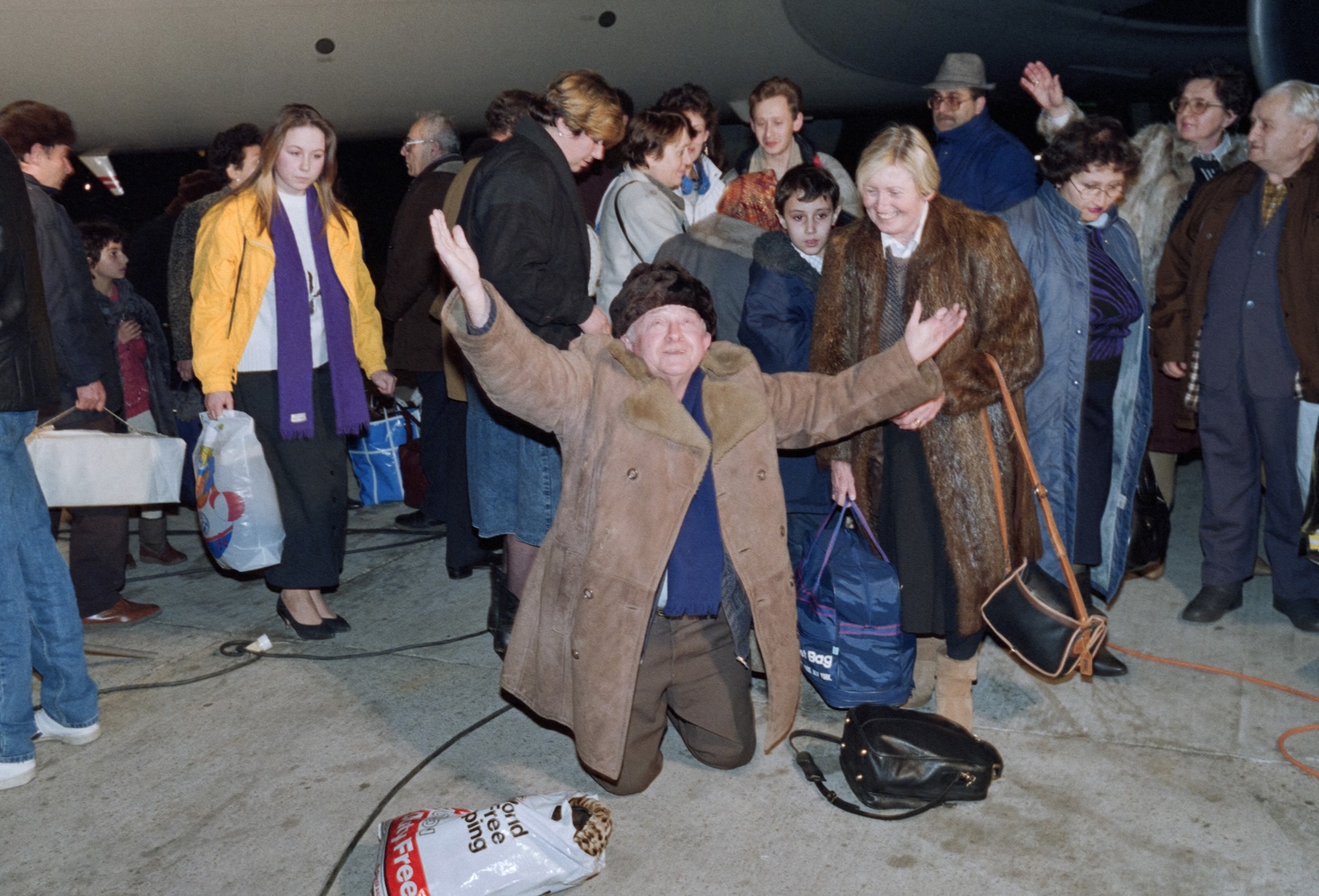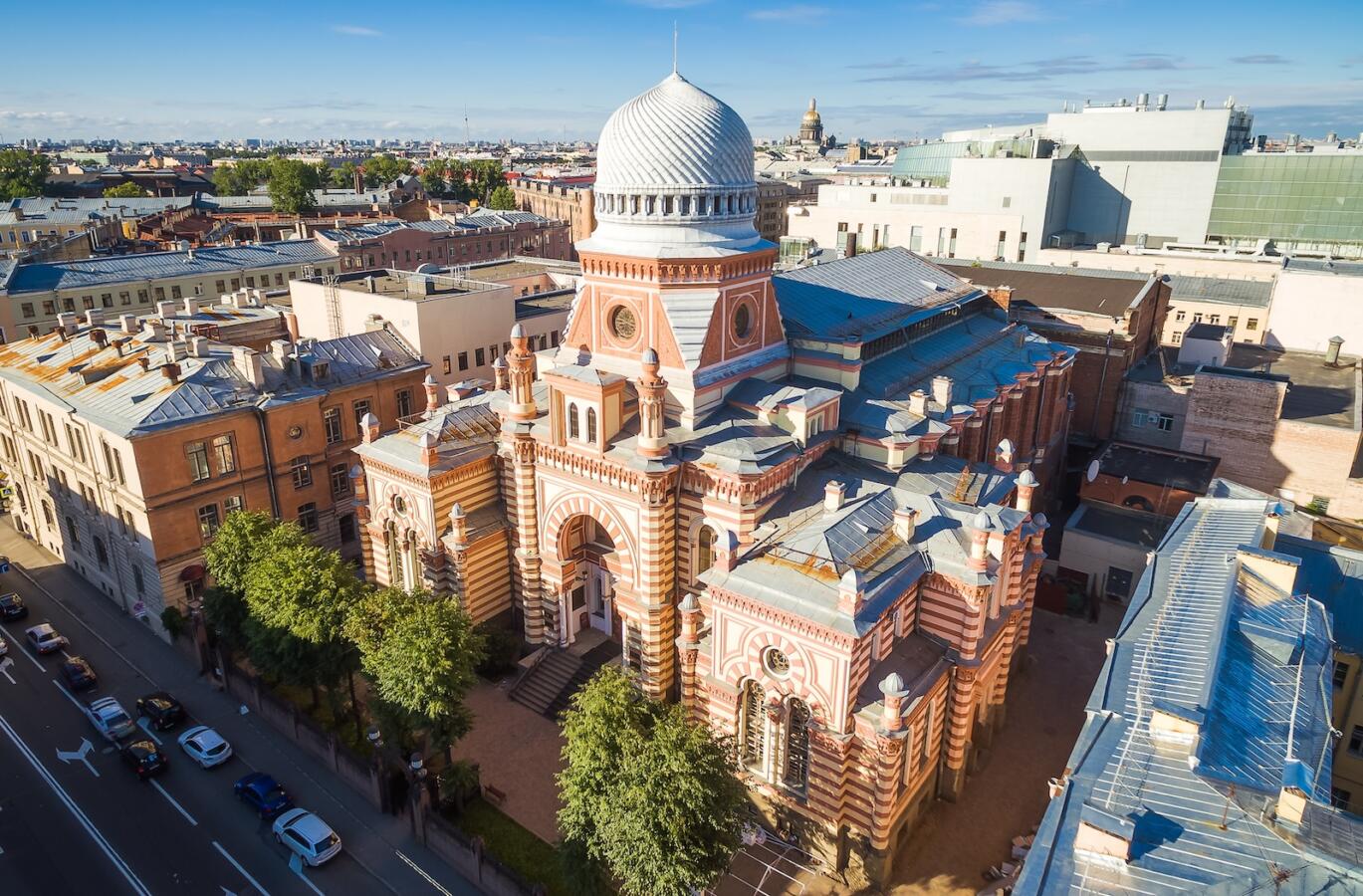The dominant narrative of Russian-Jewish history is one of repression, pogroms, state antisemitism and mass emigration. But this account obscures not only Russia’s centrality within Jewish history, but also the profound contributions of Jews to Russian culture and history. The Russian Empire was the cradle of Jewish modernity. It was the birthplace of Zionism, Jewish socialism, modern Hebrew, Yiddish literature and a major center of Hasidism. At the dawn of the 20th century, the roughly 5 million Jews living in the Russian Empire comprised the largest Jewish community in the world. A century later, only a fraction of that number of Jews were living in the Russian Federation, but legacies of the czarist and Soviet past continue to be felt across the Jewish world.
Jews in the Russian Empire
Defining the boundaries of Russian Jewry is anything but straightforward. The country known today as Russia was previously the most populous republic in the Soviet Union and before that the epicenter of a sprawling Eurasian empire. Many of those who identify as Russian Jews trace their lineage to lands that are today beyond the borders of the Russian state. Indeed, Jews were banned from living within the Principality of Muscovy, the medieval precursor to modern Russia, during the reign of Ivan the Terrible in the 16th century.
But 200 years later, a rapidly expanding Russian Empire acquired a massive population of Jews as it swallowed up the lion’s share of the Polish-Lithuanian Commonwealth and conquered present-day southern Ukraine from the Ottoman Empire. Rather than exiling these Jews, Catherine the Great restricted their residency to these newly acquired Western borderlands, which encompassed modern-day Belarus and Moldova, most of Ukraine and Lithuania, and parts of Poland and Latvia. This area became known as the Pale of Settlement, and until the fall of the Romanov dynasty in 1917, it was home to the vast majority of the empire’s Jews.
Throughout the first half of the 19th century, the modernizing czarist state attempted to reform its Jewish subjects. This often meant repressive policies aimed at assimilation, such as drafting Jewish boys into the imperial army for 25-year terms. At the same time, Western-minded officials advanced the establishment of state-run Jewish schools and rabbinical seminaries. Both carrot and stick resulted in the erosion of Jewish communal autonomy and the decline of traditional religious authority.
With your help, My Jewish Learning can provide endless opportunities for learning, connection and discovery.

Most Jews in the Pale clung to religion. Many became adherents of the joyful approach to Jewish practice celebrated by Hasidism, a movement that emerged in the 1700s in what is today western Ukraine and quickly spread throughout the Pale. For more than a century, the Russian town of Lyubavichi was home to the Chabad movement, today the best-known Hasidic group in the world. But other Russian Jews welcomed modernity with open arms. Liberals and wealthy merchants who hoped to integrate into Russian society were temporarily vindicated during the relatively progressive rule of Alexander II (1855-1881). His reforms permitted growing numbers of Jews to move to Russian cities, acquire Russian-language proficiency, and integrate into the Russian economy. As tens of thousands of Jews left the Pale, Saint Petersburg became a major hub of Russian-Jewish life. With more Jewish men and women receiving a secular education, some began to embrace the radical left-wing politics championed by the Russian intelligentsia.
In 1881, populist revolutionaries assassinated Alexander II. An ensuing antisemitic press campaign ignited mass violence, setting off the first of three major waves of what have become known as pogroms. The state did not orchestrate these incidents, but it did blame the Jews for them. In response, the new czar, Alexander III, rolled back many of the advancements Jews had secured during his father’s rule.
The violence had profound consequences for Jewish history. Former advocates of integration now urged Jews to take their future into their own hands by moving to Palestine, initiatives that gave rise to modern Zionism’s opening act, the First Aliyah. This inaugural movement of Russian Jews to Palestine included radical leftists such as the Bilu group, along with elite intellectuals like Eliezer Ben Yehuda, the father of modern Hebrew. Far more Jews left for the United States and Europe. Between 1881 and 1917, some two million Jews poured out of Russia, about half of whom ended up in New York City.
But the majority stayed behind. The peak years of emigration in the early 1890s also saw the construction of the first synagogues in Moscow and Saint Petersburg. Many Jews continued fighting for one vision or another of integration. Jewish liberals rallied for the end of civil restrictions that blocked Jews from many professions and confined them to the overcrowded Pale, while autonomists demanded national Jewish rights and representation within the Russian political order. Jewish Marxists agitated for the overthrow of the czar and, in 1897, founded the empire’s first Marxist political party, the General Jewish Labor Bund. More radical Jewish-born socialists, such as Leon Trotsky, scoffed at the Bund’s claim that Jews should receive special treatment and believed it would not be long before Judaism would disappear.
Russian Jews Under Communism
The fall of the Romanov dynasty in 1917 led to the lifting of residency restrictions on Jews. The steady flow of Jews from the Pale into Russian urban centers that had begun in the mid-1800s became a torrent. This process accelerated with the rise of the Bolsheviks later that year. In the first decades of Soviet rule, the Jewish population of Saint Petersburg grew from 50,000 to 200,000, while the Jewish population of Moscow swelled even more rapidly, from 28,000 to 250,000.
After taking power, the Bolsheviks implemented policies that aimed to mobilize Jewish nationhood in the service of the revolution. In 1918, the regime established the Yevsekstitya, a section within the party to deal with Jewish affairs. While the czarist state had sought to remold the empire’s Jews by subsuming Jewish institutions under its control, the Yevsektsiya led a ruthless campaign intended to create a militantly atheistic iteration of Jewishness and a pro-Soviet Jewish national identity. It established official Yiddish schools, newspapers, courts, theaters and publishing houses, along with Jewish agricultural settlements in Crimea. In 1934, the Soviets even established an Autonomous Jewish Oblast, or region, in the Russian far east, intending it to be the center of Yiddish culture and Jewish national life. But relatively few Jews participated in this experiment. Indeed, most Soviet Jews abandoned Yiddish within a generation or two. More than any other minority in the early USSR, Jews were distinguished by their rapid acquisition of Russian language skills, their tendency to live in cities and intermarry with Russians, and their political and cultural visibility.

In 1939, the USSR signed a non-aggression pact with Nazi Germany, triggering a deep sense of insecurity among Soviet Jews. But after Hitler invaded the Soviet Union in 1941, Soviet power was the only force protecting Russian Jewry from destruction. Most of the vast territory of the Russian Soviet Republic did not experience Nazi occupation, and many Jews living in the territories that were occupied had evacuated eastward into the Soviet interior before the Nazis’ arrival. Consequently, most Jews living in Russia avoided the fate met by those in the former Pale, the epicenter of the Nazi genocide.
Russian Jews also played a major role in resisting the Nazis. Around half a million Jews fought in the Red Army, and a disproportionately high number were decorated for their bravery. Nearly 200,000 of them did not survive the war. In Moscow, intellectuals and political figures formed the Jewish Anti-Fascist Committee to rally international support for the Soviet war effort. Its members included Ilya Ehrenburg and Vasily Grossman, two prominent writers who were among the first in the world to collect Holocaust survivor testimonies.
But despite these heroic contributions to the Soviet victory, official attitudes toward Jews turned sharply negative in the postwar period. Stalin had initially supported the establishment of Israel, but he soon grew paranoid about the potential loyalty of Soviet Jews to the Jewish state. The final years of his rule were marked by rising state antisemitism, which masqueraded under the guise of “anti-cosmopolitanism.” Jews were forced out of positions of political power, silent university quotas were implemented and the leading Yiddish intellectuals were arrested and murdered. The frenzy culminated when a group of elite Jewish doctors were accused on bogus charges of poisoning Soviet officials. Had Stalin not died in the middle of this scandal, things may have gotten far worse for Soviet Jews.
After Stalin, Jews never regained the upward ascendency they enjoyed before the war. Discrimination kept them from many professions and anti-Zionism became a central plank of Soviet ideology. Still, Jews remained part of the Russian elite. They were well-represented in academia and the scientific community and were highly visible in vital spheres of Soviet culture, including music, chess and ballet. The chess grandmaster Mikhail Botvinnik spoke for many when he said: “I am a Jew by blood, a Russian by culture, Soviet by upbringing.”
The Late Soviet Period and Beyond
By the 1960s, a growing number of Soviet Jews were in open rebellion against this Soviet upbringing, with some becoming key players in the human rights movement. Later in the decade, as national movements mushroomed across the Soviet Union, more Jews began to embrace Zionism and demand both the right to emigrate to Israel and the revitalization of Jewish culture inside the USSR. Pressure from abroad helped force the Soviet state to partially meet these demands. Between 1970 and 1989, 300,000 Jews — more than 10 percent of the Jewish population — left the country, mainly for Israel and the United States.
Those who were denied exit visas became known as refuseniks. Forming tight-knit communities in Moscow and Leningrad, they led the Jewish national struggle in the late Soviet period. Many, like the famed dissident Natan Sharansky, served lengthy stints in forced-labor camps.

With the fall of the Soviet Union in 1991, Russian Jews were finally free to leave. Hundreds of thousands would do so, mostly for Israel, where their presence transformed the Jewish state demographically, politically and culturally. A large Russian Jewish community also took root in Germany. But those who stayed behind witnessed a resurgence of organized Jewish religious life and civil society. Religious movements like Chabad and Zionist organizations established a foothold. Jewish studies became a serious academic discipline. And in 2012, a Jewish Museum and Tolerance Center opened in Moscow. As of 2020, some 150,000 to 600,000 Jews lived in the Russian Federation, the estimates varying considerably based on how Jewishness is defined.
But Russia’s full-scale invasion of Ukraine in 2022, and the atmosphere of domestic repression that followed, engendered new anxieties and prompted thousands of Jews to leave. Many culturally prominent Jews were declared foreign agents, and the state has moved to ban certain Zionist organizations. The prolonged desiccation of the wellspring of Jewish modernity continues.



